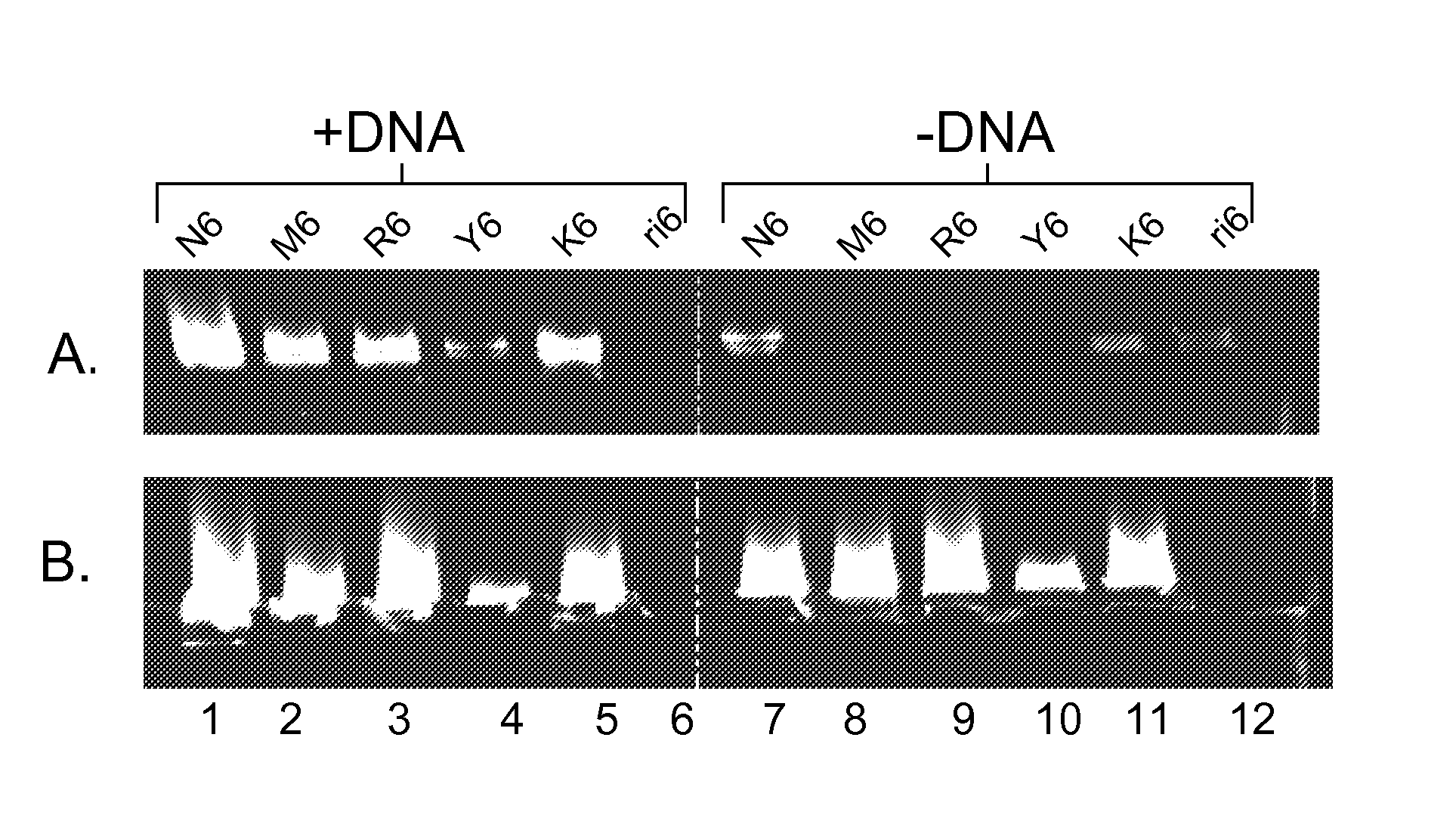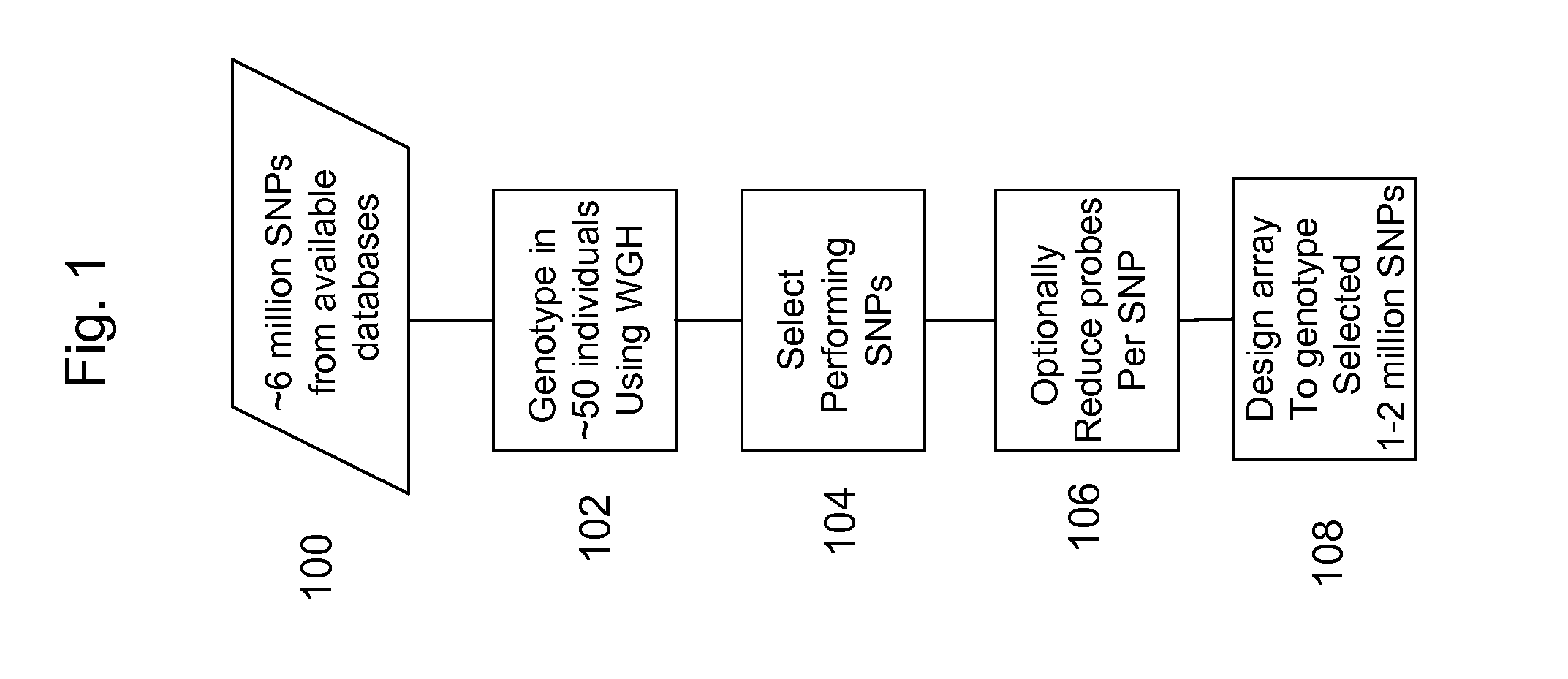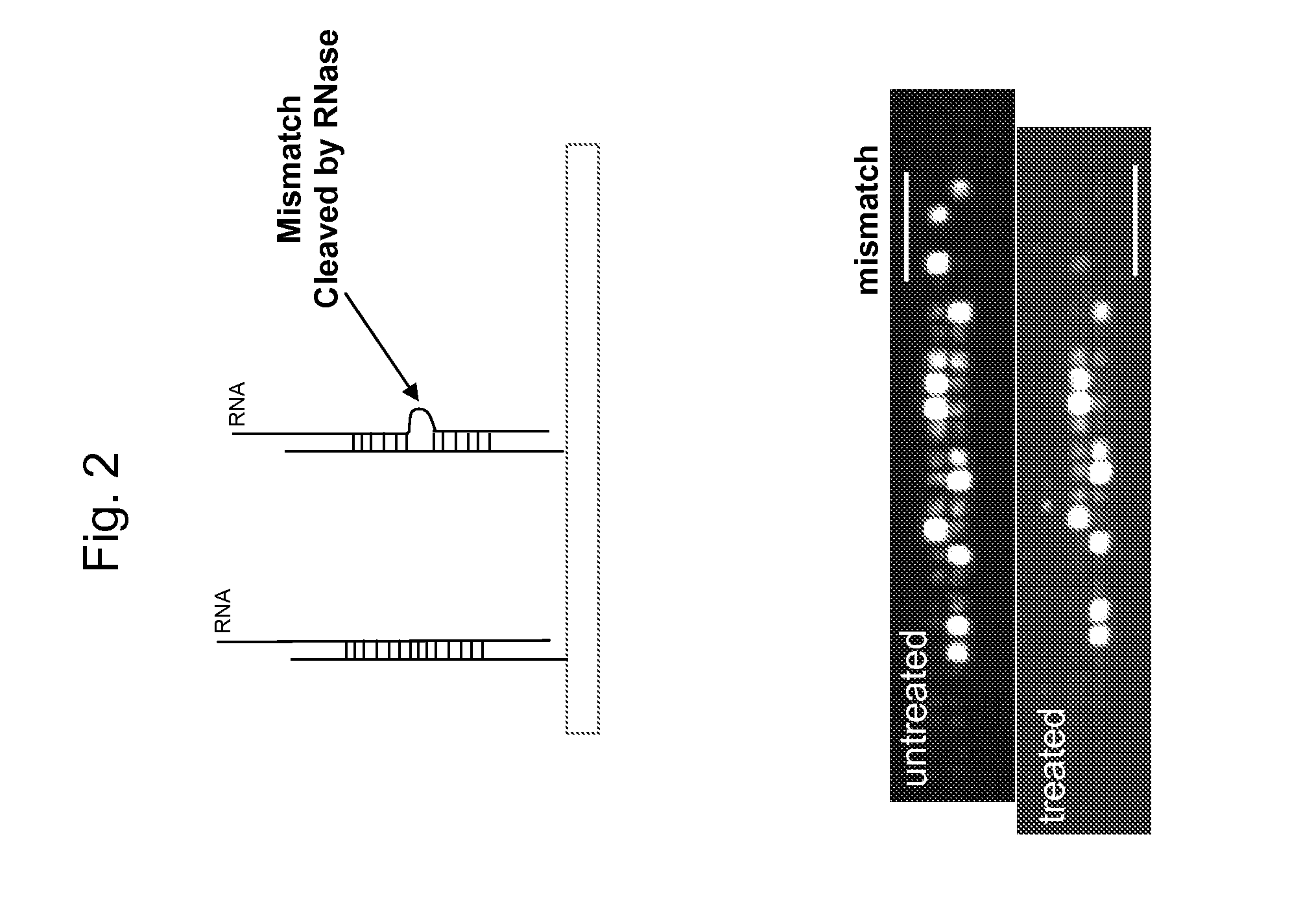Methods for high specificity whole genome amplification and hybridization
a whole genome and hybridization technology, applied in the field of complex nucleic acid amplification and analysis, can solve the problems of large-enough isolating, inability to produce accurate representations of output amplified dna, and the complexity of the overall amplification product,
- Summary
- Abstract
- Description
- Claims
- Application Information
AI Technical Summary
Problems solved by technology
Method used
Image
Examples
example 1
[0089] Human HapMap DNA samples from 51 individuals were obtained from Coriell. For each of the 51 samples 20 μl (1 μg) template DNA was mixed with 20 μl buffer D1 (Qiagen Repli-G Midi Kit) and vortexed, spun and incubated for 3 min at room temp. 40 μl of Buffer NI (Qiagen) was added followed by vortexing and spinning. 312 μl of WGA MasterMix (Qiagen) and 8 μl of phi29 DNA polymerase (Qiagen) were added and the samples were incubated at 30° C. overnight and then at 65° C. for 10 min. The amplified samples were fragmented as follows: 400 μl of amplified DNA was mixed with 40 μl of 10× fragmentation buffer from the Affymetrix 500K Mapping Assay reagent kit and 2.5 μl of fragmentation reagent from the Affymetrix 500K Mapping Assay reagent kit. The samples were incubated at 37° C. for 12 min and at 95° C. for 15 min. The samples were then ethanol precipitated by addition of 40 μl of 3M NaOAc and 1000 μl of absolute ethanol. The samples were then resuspended in 135 μl water, 15 μl 10× fr...
example 2
[0093] Whole genome hybridization using non-specific competitors. Inclusion of poly(vinylphosphate) [PVP] in hybridization. PVPS was not tested because solutions made with TMACl resulted in the generation of a cloudy precipitate. Possibly, PVPS could be used in MES or SSC hybridizations without TMACl.
[0094] The results of inclusion of PVP in comparison with yeast RNA is shown in Table 1.
DM p = 0.05 call% SNPs >0.9rateconformanceSignal to Noise12% Yeast RNA43.38%75.84%3.5994 ul 10% PVP42.69%70.09%1.8625 ul 10% PVP26.80%63.65%1.85 4 ul 10% PVP43.38%68.54%1.72
[0095] Resuspend RNA from torula yeast to 500 milligrams per mL in water (50% solution). This can be RNA from Ambion Cat#7118, or Sigma #3629, but some preparations of yeast RNA tested were not soluble at this concentration. Prepare 200 to 400 μg of genomic DNA or DNA target amplified using WGA by fragmenting and labeling with DLR using TdT. Combine the labeled DNA target with the yeast RNA in hybridization buffer (2.9M TMACl, ...
example 3
[0096] Increase specificity of WGA reaction when using semi-random primers. The control N6 is a random hexamer mix including all 4 nucleotides (A, C, G and T), M6 has primers containing only A and C, R6 has only A and G, Y6 has only C and T, K6 has only T and G and ri6 is rG / rA / rU / rC. For example, M6 is 5′-MMMMMM-3′ where M is either A or C. Panels A and B are identical except for the polymerase used. In panel A the enzyme used was REPLIPHI™ phi29 DNA Polymerase (0.1 μg / μl) from Epicentre Biotechnologies, for panel B the enzyme was phi29 from New England Biolabs. Background amplification (−DNA) was dramatically reduced in the M6 and R6 samples. The N6 sample showed amplification in both the +DNA and −DNA reactions (lanes 1 and 7) and for both enzyme preps (panels A and B). M6 and R6 showed the highest level of amplification in the +DNA sample with no detectable amplification in the −DNA sample indicating that primers composed of only A and C or only A and G can be used for WGA ampli...
PUM
| Property | Measurement | Unit |
|---|---|---|
| temperature | aaaaa | aaaaa |
| pH | aaaaa | aaaaa |
| pH | aaaaa | aaaaa |
Abstract
Description
Claims
Application Information
 Login to View More
Login to View More - R&D
- Intellectual Property
- Life Sciences
- Materials
- Tech Scout
- Unparalleled Data Quality
- Higher Quality Content
- 60% Fewer Hallucinations
Browse by: Latest US Patents, China's latest patents, Technical Efficacy Thesaurus, Application Domain, Technology Topic, Popular Technical Reports.
© 2025 PatSnap. All rights reserved.Legal|Privacy policy|Modern Slavery Act Transparency Statement|Sitemap|About US| Contact US: help@patsnap.com



